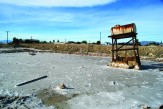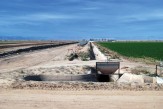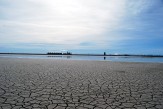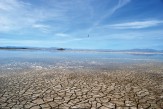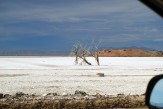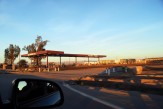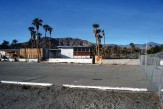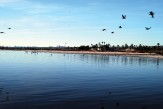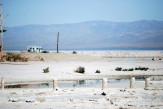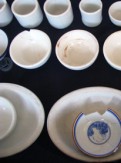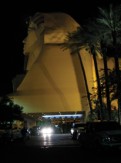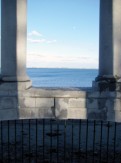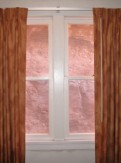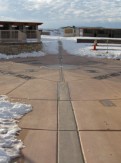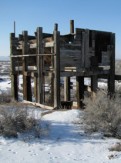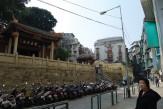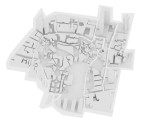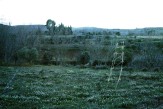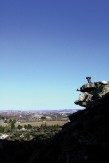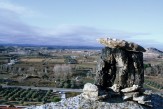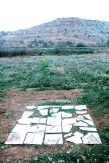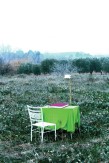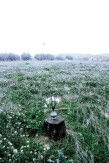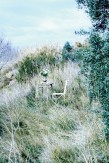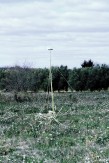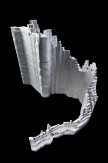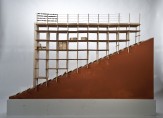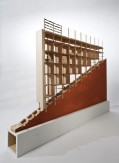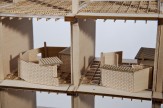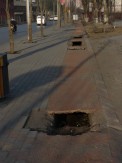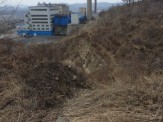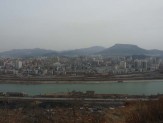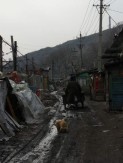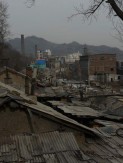2010–2011 Fellowship Recipients
Fabio J. Alvino-Roca | Alcañiz, Spain
Salomé Balderrama | Caracas, Venezuela
Janice King Pui Chu | Macau, China
Deborah Ferrer | Guatemala City, Guatemala
Standish Lee | Benxi, China
Emily Vo Nguyen | US Monuments
Jesús Yépez | Salton Sea, CA
Projects
-
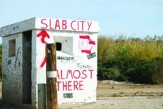
Jesus Yepez
-

Emily Nguyen
-

Janice Chu
-
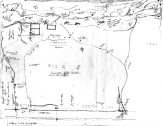
Fabio Alvino-Roca
-

Salomé Balderrama
-

Standish Lee
-
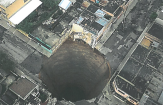
Deborah Ferrer
Back
Jesus Yepez
The site of my research was the Salton Sea, a lake in Southern California located 70 miles away from the Mexican-American border, adjacent to an agricultural area worked by Mexican immigrants during the warmer months. In the middle of the 20th Century, developers saw the potential of the newly formed lake to start the development of cities and towns along its edge. As the salinity and toxicity of the water increased, the residents of these settlements began to abandon them. The basis of my research was to analyze the conditions that led to the development of the Salton Sink and the Salton Sea and how today its perimeter is comprised of abandoned cities that are inhabited every winter by recreational vehicles that occupy the spaces where actual homes should exist.
This investigation took place during the first week of January 2011, the time when people who own motor homes from the southwestern United States gather around the lake. I believe that the recreational vehicles and the trailers, although a temporary presence, do not comprise a form of mobile architecture. Instead, the presence of recreational vehicles brings forth the questions of why and how previous attempts to build homes around the Salton Sea have failed.
Renting a car and driving the four hours from Los Angeles to the Salton Sea was a way to participate in this event. I documented my journey through a series of films, photographs, and drawings. My intent was to study these areas of abandonment to consider how I could design a way they could be reconstructed without making the lake more toxic or cause an increase in salinity. As I drove around the Salton Sea, the rapid rate at which the lake is drying was very clear; it’s important to understand these consequences when the rate of incoming water is the same as the rate of evaporation. Ultimately, the lake will continue to shrink until it reaches a point when the water has become extremely saline or brine. These conditions informed my thesis in allowing me to consider alternatives that would prevent a shock to the natural environment and that might help ease the transformation of the lake.
Emily Nguyen
A monument has been defined as a structure erected to commemorate an idea, person, place or event. Or, it is a site that is marked and preserved because of its importance to a group of people. In both cases, the making of a monument requires a mental leap. A community must collectively project meaning onto a structure or place in order to define it as a monument. In America, these monuments can range from sites made significant by tragedy, natural beauty, cultural movements or historical events. In some cases, the construction and artifice made in order to signify a monument is elaborate. Monuments can be indicated by signs, promenades or entire structures. However, in some cases, the demarcation of a monument is invisible and the monument is identified through a collective consciousness.
The William Cooper Mack Thesis Fellowship allowed me to further investigate many American monuments and it also led me to unexpected discoveries. Through the fellowship I was able to travel to Appalachian country, Washington, D.C., and Plymouth, Massachusetts. In the Southwest I visited the Hoover Dam, the Vegas Strip, Route 66, Grand Canyon, Navajo Nation, the Four Corners, Topaz Internment Camp, an Indian reservation, the Great Salt Lake and the Salt Lake City Mormon Tabernacle. In San Francisco I saw various sites like Coit Tower, the Golden Gate Bridge, the Cable Car Museum, Mission Dolores, and Tanforan.
From my travel experiences, I began to envision the monument as part of the American collective unconscious, represented in my project through an archipelago of models. These objects and dissections of icons led to the design of four spaces that investigate American memory and contradiction. The series of models and the four proposals represent the Hall of Record, and examine the idea of the index, the relationship between the souvenir and the monumental, and the hand-held and architectural scale.
Janice Chu
The William Cooper Mack Thesis Fellowship allowed me to travel to China. Through my research of the city Macau, I was able to understand the city and broader questions of urbanism in a much more nuanced way. I explored two neighborhoods–the North Area and Camoes Garden.
Like many other Asian cities, Macau is on the cusp of great change. In the North Area of Macau Peninsula, the answer to the need for development has been generic housing blocks. The North Area is a catalog of how the city has grown, with 8-story buildings from the 1970s and 16-story housing estates from the late 1980s and early 1990s, where each block measured 125 meters by 125 meters. The newer 40-story luxury apartment buildings adjacent to the water’s edge pose a marked juxtaposition to the older buildings with lower income tenants.
Camoes Garden is located in the mid-west zone of Macau Peninsula. It is an older area of the city that tourists seldom visit, but it exhibits a real sense of character and history. There is a diversity of architectural scale in this neighborhood; 6-story residential buildings, temples, structures dating back to the Qing Dynasty and the occasional 40-story building.
The Venetian Casino and the luxury high-rise buildings in the North Area demonstrate the new amount of wealth and the enormous growth that Macau is undertaking. Yet, they both deny the history of the city and what it already has to offer. The housing estates in the North Area feel like any other Asian city. Through my primary research of this condition, I saw the need to resist this generic approach to building, which seems to plague many growing cities.
The scale of the blocks in the North Area offer some advantages in that they have more organized streets that allow for ease of transportation, although the attempt to bring a local character to these housing estates through street level storefronts was not successful. The North Area and Camoes Garden seem to stand in opposition to each other, but in traversing these parts of the city, and, upon further reflection, I realized that there could be a hybridization of the two. Macau should be able to grow while retaining its cultural history.
My thesis project provides an alternative to the conditions I found in Macau through the introduction of 125 meter by 125 meter housing blocks, grafted onto the urban fabric of Camoes Garden. This proposal breaks the isolating nature of these blocks creates continuity with the smaller streets, while at the same time maintaining the density of an enclosed housing block.
Fabio Alvino-Roca
THE FRAGILE HOUSE
My site was the Spanish desert – rural, now abandoned, a site of nothingness. For three weeks I lived in a cabin made of stone. As I lived in this modest dwelling, no larger than a small room in a Manhattan apartment, I studied the enormous site and put my building methods to the test. This is a short narrative of the things I built with my hands.
In the desert, the present becomes the past; these structures are both witness to and evidence of such a process. My site visit yielded a proposal for the appreciation and regeneration of this process—the exploration of a fragile culture of obsolescence, varying in function, form and history. Each structure audits the role it will have at a new point in time. Each structure is essentially a literal ruin, devoid of function. They are seen, therefore, not as objects in the landscape, but as objects becoming the landscape. And as landscape, they are ready to be claimed and possessed by the individual. The structures stand alone, each of them presenting a program, function, philosophy. They are not created to last an eternity, but only as long as the materials they were constructed will allow. Collectively, the structures comprise the program of house, ‘The Fragile House.’
To smell, hear, taste, see and feel what the chosen site had to offer was essential for these creations to be more than just forgotten dreams. I have come to realize that for a project to be loved by its creator or persecutor, it cannot just be a study. It needs to be sensed, to become a marriage of the body and mind. My travel experience allowed me to fall in love while continuing my pursuits.
Salomé Balderrama
Salomé traveled to Caracas, Venezuela to study the city’s land settlement patterns and low-income housing crisis, specifically in relation to widespread flooding and mudslides that occurred just prior to her visit in December 2010. As a result of her trip, she became interested in understanding not only the geologic and physical conditions that led to this disaster, but also the history and evolution of the city's informal housing sector, and the socioeconomic developments that were contributing to its collapse.
When Salomé returned to school in the spring, she began work on a low-income housing proposal that integrated the self-built housing typology found in Caracas’ informal settlements with formal services, safeguards, and governmental mechanisms. Her thesis proposed combining the informal and formal city through iterative architecture that can be quickly assembled: the government builds a safe, accessible site—an open structure with services such as plumbing, electricity, communications—and families self-build homes, businesses, and community services over time into the structure’s thirty-foot bays. The project also calls for a transfer of knowledge across the formal and informal city via the construction workers who build the formal city while living in the informal city.
Standish Lee
Standish Lee’s fellowship supported her trip to Benxi—an industrial, rustbelt city in China’s northeast Liaoning province. Benxi has been listed as one of the most polluted cities in the world by the United Nations, and in 1997, along with Guiyang, Xi’an, and Guangzhou, the city was part of an analysis performed by the UN/DESA (Division for Sustainable Development) on how to implement clean production technologies. Pollution, however, has remained an issue for the city. During her trip, Standish visited the Benxi Steel & Iron factory, observed firsthand the city’s exposure to extreme air pollution, explored industrial sites on the south bank of the Taizi River, and explored paths, graves, and informal shelters in the foothills along the city’s edge. As a result of her visit, Standish decided that her thesis should not be sited in a mine, but rather on a mountain, and that it should explore the program of a bath house.
Deborah Ferrer
Deborah visited Guatemala to investigate two separate but related catastrophic events, typically referred to as sinkholes, that occurred in Guatemala City in 2007 and 2010. During her visit, Deborah met with government officials, academics, and community members who revealed that the events were not, in fact, natural disasters, but rather the result of preventable infrastructure deficiencies.

